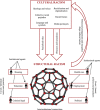The Water Surrounding the Iceberg: Cultural Racism and Health Inequities
- PMID: 37435779
- PMCID: PMC10509530
- DOI: 10.1111/1468-0009.12662
The Water Surrounding the Iceberg: Cultural Racism and Health Inequities
Abstract
Policy Points Cultural racism-or the widespread values that privilege and protect Whiteness and White social and economic power-permeates all levels of society, uplifts other dimensions of racism, and contributes to health inequities. Overt forms of racism, such as racial hate crimes, represent only the "tip of the iceberg," whereas structural and institutional racism represent its base. This paper advances cultural racism as the "water surrounding the iceberg," allowing it to float while obscuring its base. Considering the fundamental role of cultural racism is needed to advance health equity.
Context: Cultural racism is a pervasive social toxin that surrounds all other dimensions of racism to produce and maintain racial health inequities. Yet, cultural racism has received relatively little attention in the public health literature. The purpose of this paper is to 1) provide public health researchers and policymakers with a clearer understanding of what cultural racism is, 2) provide an understanding of how it operates in conjunction with the other dimensions of racism to produce health inequities, and 3) offer directions for future research and interventions on cultural racism.
Methods: We conducted a nonsystematic, multidisciplinary review of theory and empirical evidence that conceptualizes, measures, and documents the consequences of cultural racism for social and health inequities.
Findings: Cultural racism can be defined as a culture of White supremacy, which values, protects, and normalizes Whiteness and White social and economic power. This ideological system operates at the level of our shared social consciousness and is expressed in the language, symbols, and media representations of dominant society. Cultural racism surrounds and bolsters structural, institutional, personally mediated, and internalized racism, undermining health through material, cognitive/affective, biologic, and behavioral mechanisms across the life course.
Conclusions: More time, research, and funding is needed to advance measurement, elucidate mechanisms, and develop evidence-based policy interventions to reduce cultural racism and promote health equity.
Keywords: culture; fundamental causes; health disparity; racism; social determinants of health.
© 2023 The Authors. The Milbank Quarterly published by Wiley Periodicals LLC on behalf of The Milbank Memorial Fund.
Figures


References
-
- Bourdieu P, Wacquant LJ. An Invitation to Reflexive Sociology. University of Chicago Press; 1992.
-
- Phelan JC, Link BG. Is racism a fundamental cause of inequalities in health? Annu Rev Sociol. 2015;41:311‐330.
-
- Gee CG, Ro A. Racism and discrimination. In: Trinh‐Shevrin C, Islam NS, Rey MJ, eds. Asian American Communities and Health: Context, Research, Policy and Action. 1st edition. Jossey‐Bass; 2009:364‐402.

